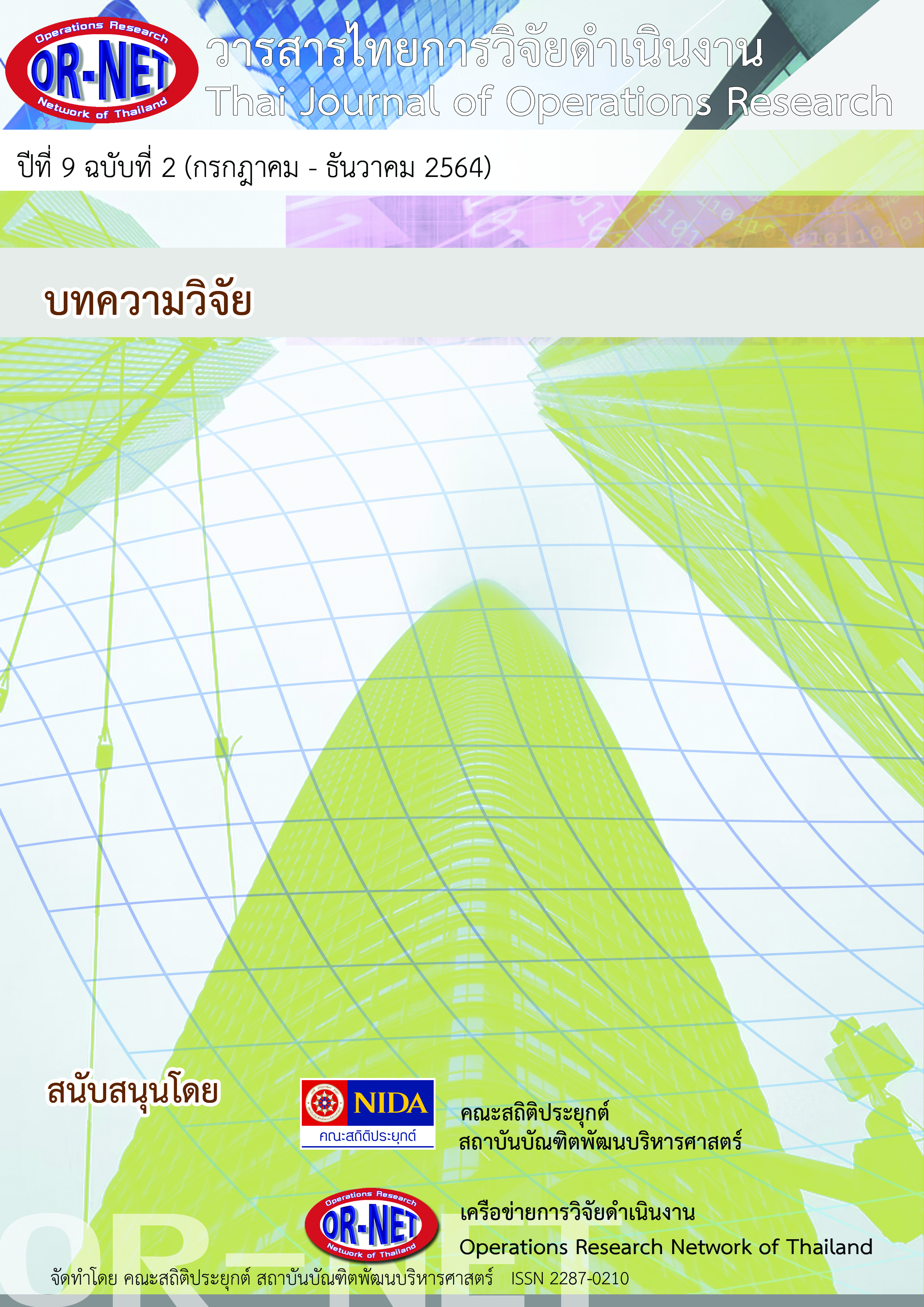A Comparison of Forecasting Methods for Seasonal Time-series with Many Zeros
Keywords:
Time Series Data, Forecasting, WildfiresAbstract
The research aims to analyze the time series of daily wildfires area in Chiang Mai which are classified as seasonality, and the data also has a wide range of zero values over a number of periods which can result in high variance. The data used consists of two parts: the number of wildfires area and the climate which can be used as a factor that can affect the number of wildfire area. The obtained data used to create the appropriate forecasting model by comparing the six forecasting methods which are multiple regression with categorical variable, multivariate polynomial regression, the truncated fourier series, Holt-Winters’s additive method, SARIMAX methods by Box-Jenkins, and artificial neural network; in addition, to measure the efficiency of the model. The test data is divided into four phases: 3 months, 6 months, 1 year and 1 year 6 months, and compare with the six forecast methods by root mean square error (RMSE). The results showed that the Multiple Regression with Categorical Variable provided the lowest RMSE values for test data over a period of 3 months, 6 months, and 1 year, and SARIMAX method provided the lowest RMSE values for test data over a period of 1 year and 9 months.




